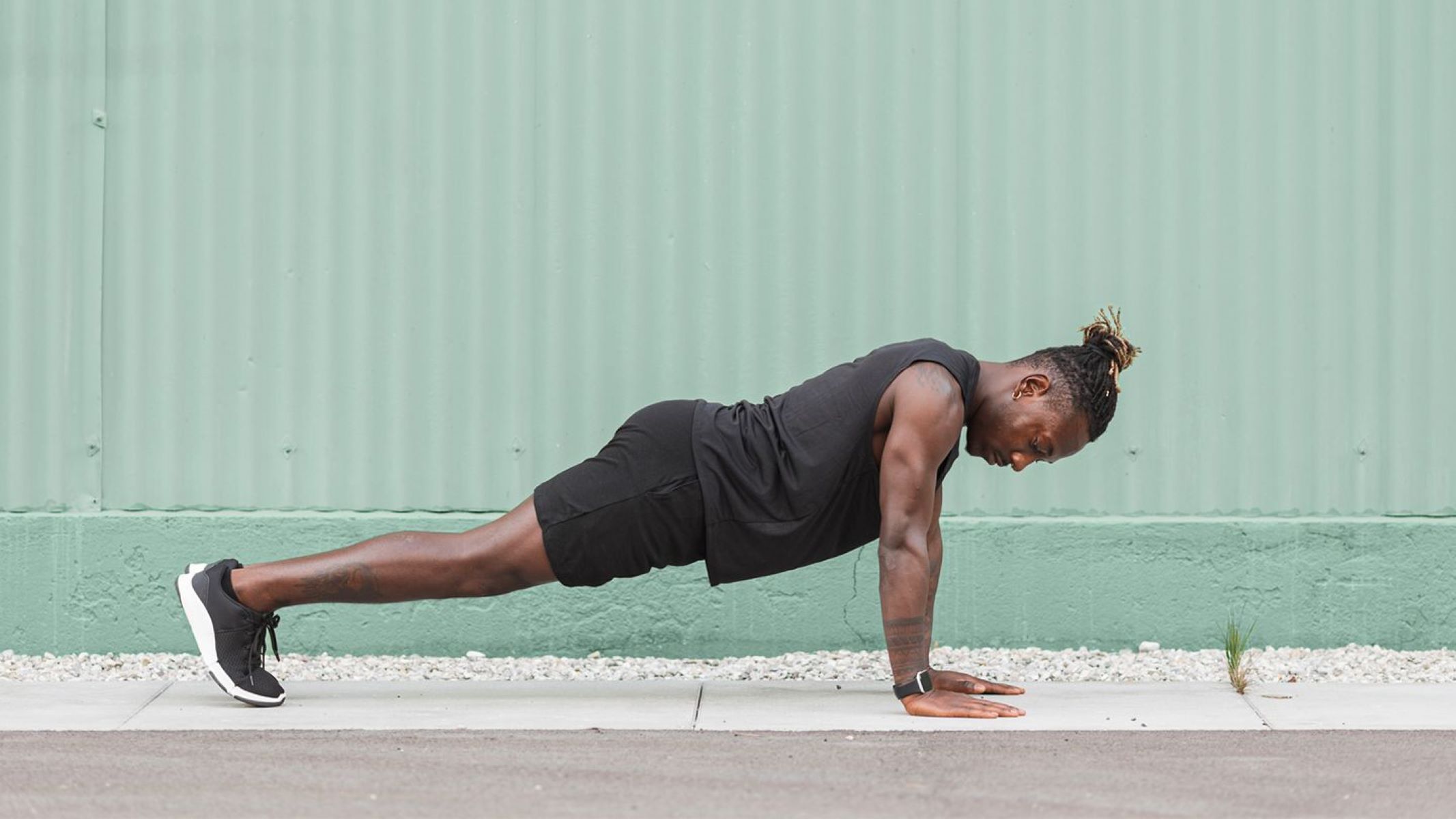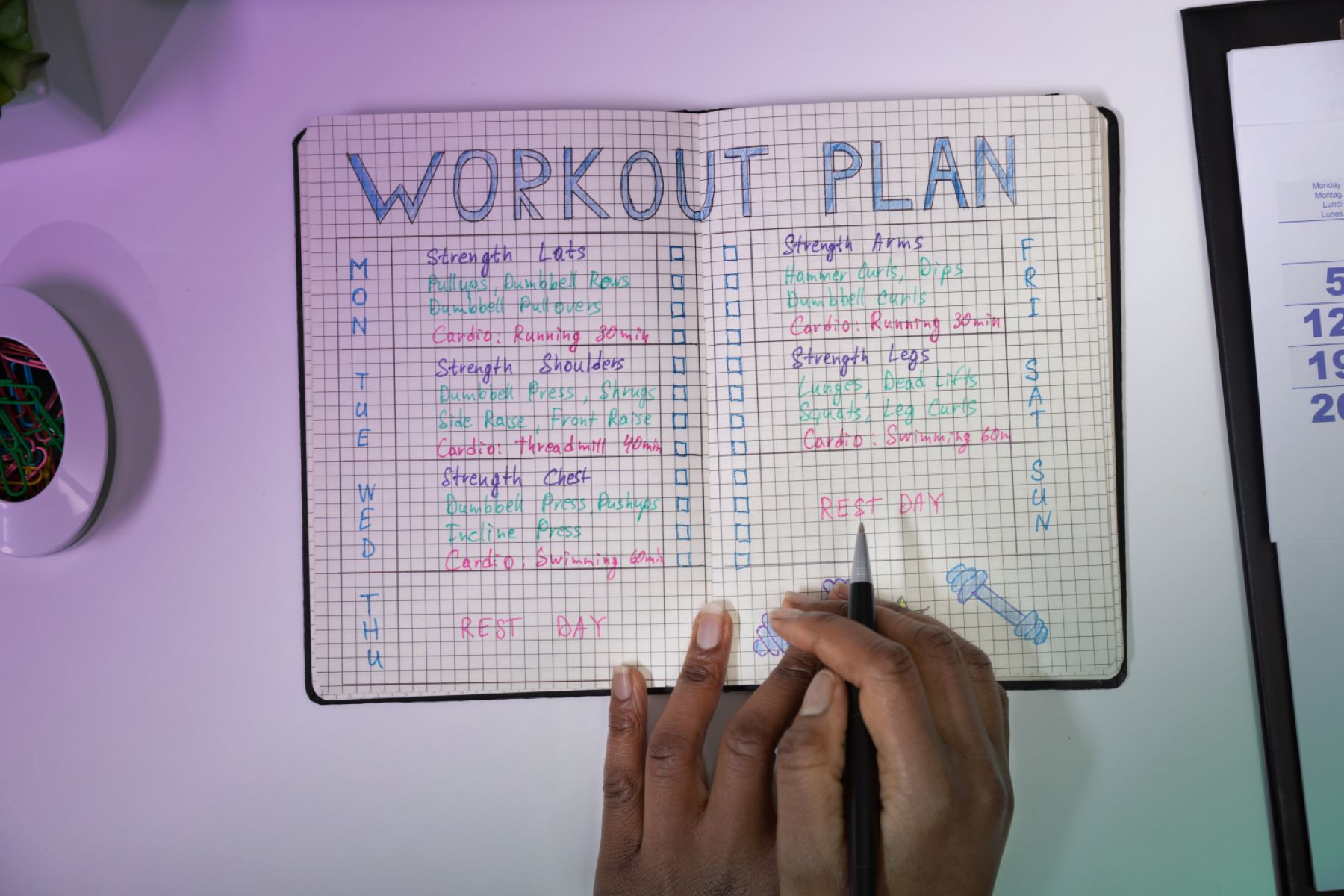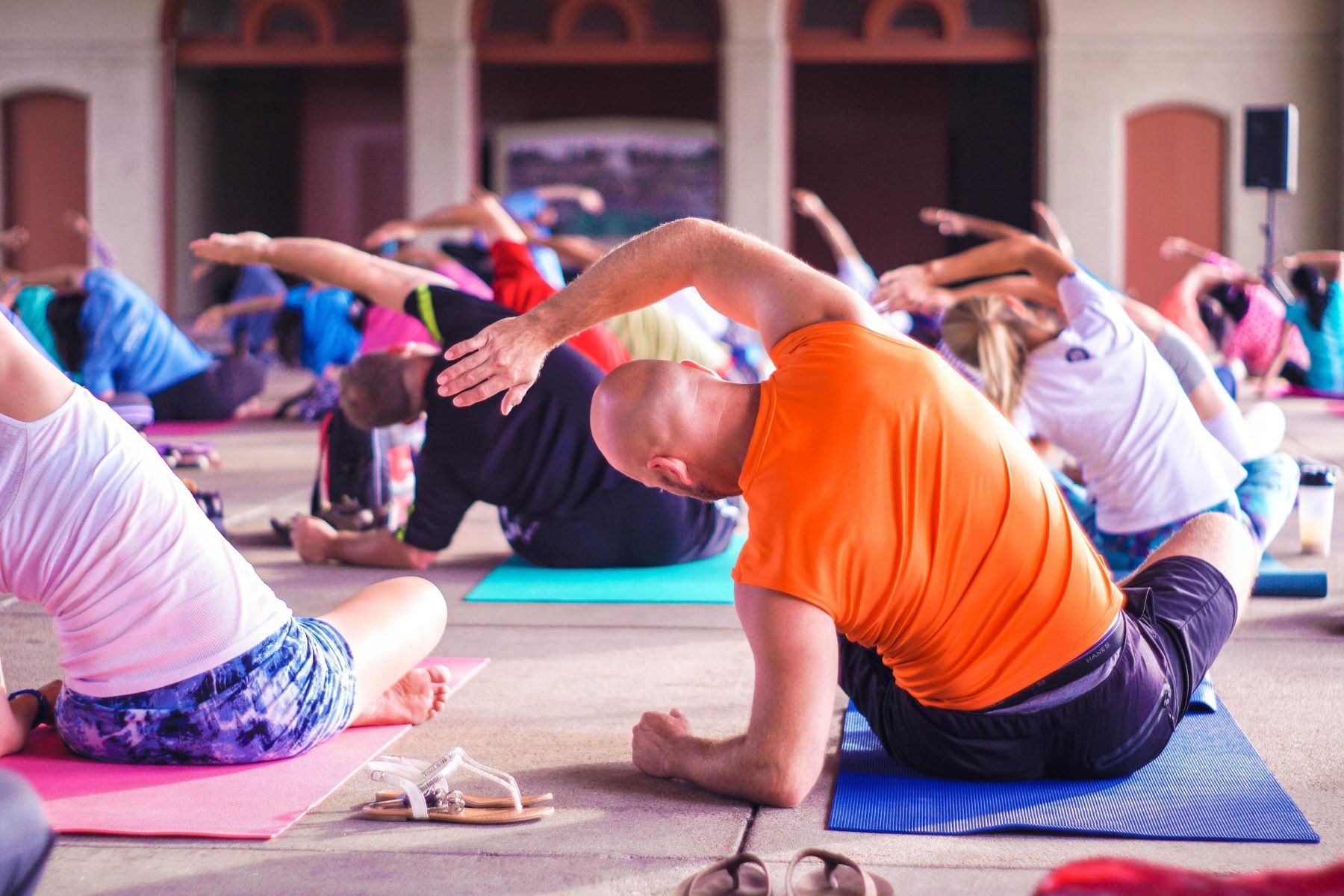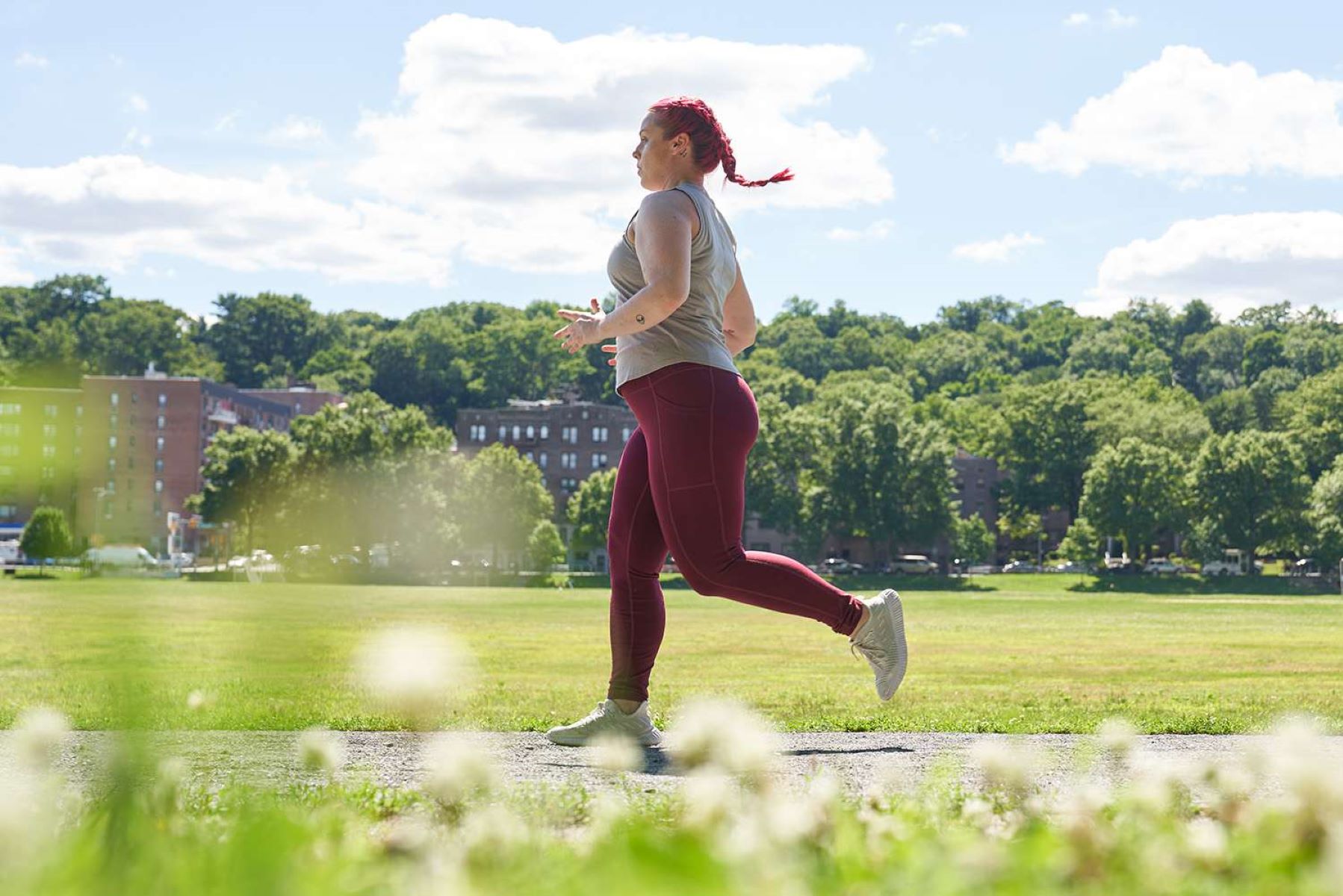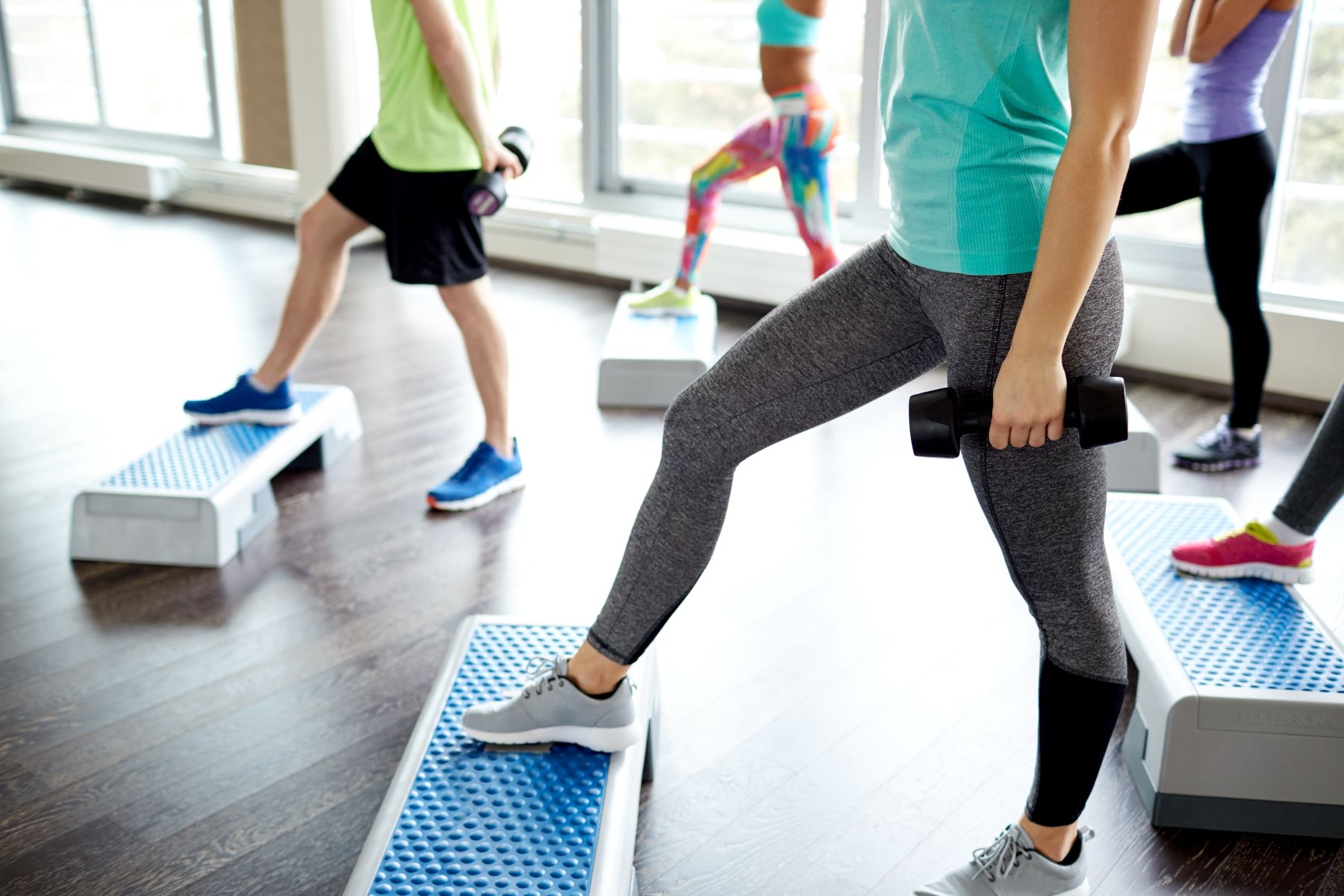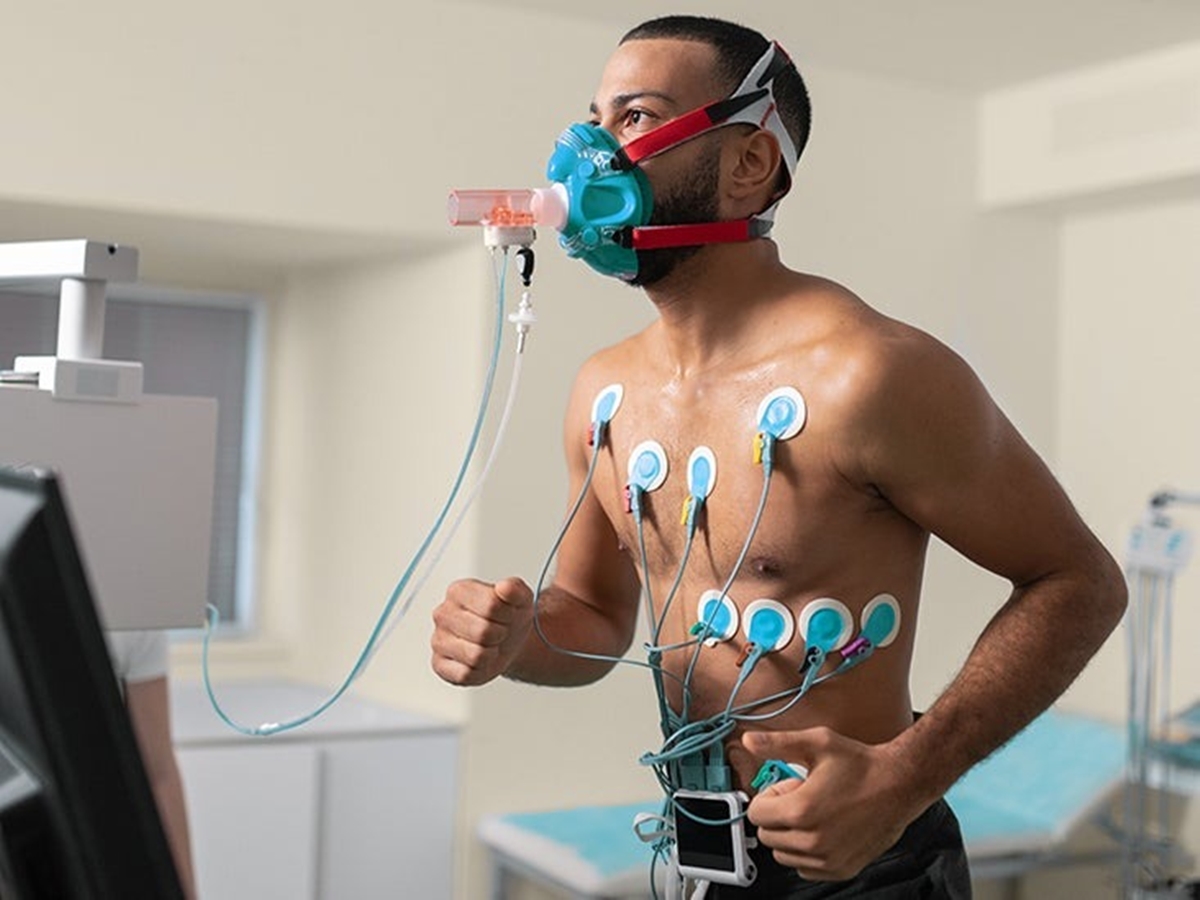

Featured
How To Measure Cardiovascular Endurance
Modified: January 2, 2024
Featured: Learn how to measure your cardiovascular endurance with these step-by-step instructions, and improve your overall fitness and health.
Introduction
Cardiovascular endurance refers to the ability of the heart, lungs, and blood vessels to work together efficiently during prolonged physical activity. It is a crucial component of overall fitness and plays a significant role in maintaining good health. Measuring cardiovascular endurance is essential for athletes, fitness enthusiasts, and individuals looking to improve their cardiovascular fitness.
Understanding your level of cardiovascular endurance can help you track progress, set realistic goals, and design effective training programs. There are various methods available to measure cardiovascular endurance, ranging from submaximal exercise tests to maximal exercise tests. Each method provides unique insights into your cardiovascular fitness and can guide you towards achieving optimal performance.
Measuring cardiovascular endurance not only helps gauge your current fitness level but also allows you to identify any potential weaknesses or areas that need improvement. By pinpointing your strengths and weaknesses, you can tailor your training regimen and focus on specific cardiovascular exercises that will enhance your endurance and overall fitness.
In this article, we will explore different methods used to measure cardiovascular endurance, discuss their pros and cons, and provide tips on how to improve cardiovascular endurance. Whether you are an athlete preparing for a competition or someone simply looking to lead a healthier lifestyle, understanding and measuring your cardiovascular endurance is crucial to achieving your fitness goals.
Understanding Cardiovascular Endurance
Cardiovascular endurance is the ability of the cardiovascular system to deliver oxygen-rich blood to the working muscles during physical activity and remove waste products efficiently. It is a measure of how well your heart, lungs, and blood vessels function together to support sustained exercise.
When you engage in activities like running, swimming, or cycling, your body demands more oxygen to produce energy. Your heart pumps more blood, and your breathing rate increases to supply oxygen to the working muscles. The more efficiently this process occurs, the higher your cardiovascular endurance.
Cardiovascular endurance is closely linked to aerobic fitness, which is the body’s ability to utilize oxygen to produce energy. Regular aerobic exercise helps strengthen the cardiovascular system, improves lung capacity, and enhances the body’s ability to transport oxygen to the muscles.
The benefits of good cardiovascular endurance extend beyond physical performance. It also plays a crucial role in overall health. Studies have shown that individuals with high cardiovascular endurance have a reduced risk of developing chronic diseases such as heart disease, stroke, and diabetes.
Understanding your cardiovascular endurance level is essential in determining the appropriate level of exercise intensity for your fitness goals. For instance, if you have lower cardiovascular endurance, you may need to start with lower-intensity workouts and gradually progress to more intense activities.
Improving cardiovascular endurance requires consistency and progressive training. By engaging in regular aerobic exercise and incorporating interval training, you can gradually increase your cardiovascular capacity over time. This not only improves your ability to perform physical activities but also boosts your overall stamina and energy levels.
Now that we have a better understanding of cardiovascular endurance, let’s explore the importance of measuring this fitness component and how it can benefit your fitness journey.
Importance of Measuring Cardiovascular Endurance
Measuring cardiovascular endurance is essential for several reasons that can benefit your fitness journey and overall health. Let’s explore some of the key reasons why it is important to keep track of your cardiovascular endurance:
#### Setting Baseline and Tracking Progress
By measuring your cardiovascular endurance, you establish a baseline to understand your starting point. This baseline serves as a reference point for tracking your progress over time. Regular assessments can help you monitor improvements and identify areas that need further attention.
#### Goal Setting
Measuring cardiovascular endurance allows you to set realistic and achievable goals. Whether you aim to improve your performance for a specific sport or enhance your overall fitness, having clear goals provides direction and motivation. Regular assessments help you gauge your progress towards these goals and make necessary adjustments to your training program.
#### Optimal Training Intensity
Knowing your cardiovascular endurance level helps determine the appropriate training intensity for your workouts. It ensures that you are working at the right level of exertion to challenge your cardiovascular system without overexerting yourself. This knowledge helps prevent undertraining or overtraining, leading to more effective and efficient workouts.
#### Identifying Weaknesses
Measuring cardiovascular endurance can highlight specific areas of weakness in your fitness. For example, if your endurance is lower during activities that primarily engage your lower body, it may indicate a need to include more exercises that target those muscles. By identifying weaknesses, you can design targeted training programs to address them and improve your overall performance.
#### Monitoring Health and Fitness Levels
Cardiovascular endurance is strongly linked to overall health and fitness. Regular assessments provide insights into how your cardiovascular system is functioning and whether you are at risk for any cardiovascular diseases. Additionally, monitoring your cardiovascular endurance can help you identify improvements or declines in your overall fitness, prompting you to make necessary lifestyle changes to maintain or improve your health.
In summary, measuring cardiovascular endurance is vital for setting goals, tracking progress, determining training intensity, identifying weaknesses, and monitoring overall health and fitness levels. Through the use of various measurement methods, you can gain valuable insights into your cardiovascular fitness and make informed decisions about your training and lifestyle choices.
Different Methods to Measure Cardiovascular Endurance
There are various methods available to measure cardiovascular endurance, each offering unique insights into your fitness level and cardiovascular performance. Let’s explore some of the most common methods:
### Submaximal Exercise Tests
Submaximal exercise tests estimate your cardiovascular fitness level by assessing your heart rate response to submaximal exercise. These tests are generally less intense and more manageable for individuals of different fitness levels. The most common submaximal exercise test is the Astrand-Rhyming Cycle Ergometer Test, where you cycle at a steady pace while your heart rate is monitored.
### Maximal Exercise Tests
Maximal exercise tests push your cardiovascular system to its limits to determine its maximum capacity. These tests are typically more intense and require a higher level of fitness. The most well-known maximal exercise test is the VO2 max test, which measures the maximum amount of oxygen your body can use during intense exercise. This test is often conducted on a treadmill or stationary bike while wearing a mask to measure oxygen consumption.
### Other Measures of Cardiovascular Endurance
There are additional measures that can provide insights into your cardiovascular endurance:
#### Resting Heart Rate
Your resting heart rate is the number of times your heart beats per minute when you are at rest. A lower resting heart rate is generally indicative of good cardiovascular fitness.
#### Recovery Heart Rate
Recovery heart rate refers to how quickly your heart rate returns to its resting rate after exercise. A quicker recovery indicates better cardiovascular fitness.
#### Talk Test
The talk test is a simple method to assess your exercise intensity. If you can comfortably hold a conversation during exercise, it indicates that you are working at a moderate intensity, which is beneficial for cardiovascular endurance.
It is important to note that these methods provide an estimation of your cardiovascular endurance and are most effective when used in combination. Consult with a fitness professional or healthcare provider to determine the most suitable methods for measuring your cardiovascular endurance based on your fitness level and goals.
Now that we have explored different methods to measure cardiovascular endurance, let’s delve into the factors that can affect your cardiovascular endurance level.
Submaximal Exercise Tests
Submaximal exercise tests are commonly used to estimate cardiovascular endurance by assessing your heart rate response to submaximal exercise. These tests are designed to provide a reasonable approximation of your cardiovascular fitness level without pushing you to your maximum exertion. Submaximal exercise tests are often used for individuals of varying fitness levels due to their less intense nature.
One of the most widely used submaximal exercise tests is the Astrand-Rhyming Cycle Ergometer Test. In this test, you cycle at a steady pace while your heart rate is monitored. The test involves exercising at a submaximal workload for a specific duration, usually between 6 and 12 minutes. The heart rate response is then recorded and used to estimate your aerobic fitness level.
During the Astrand-Rhyming test, your heart rate response is measured at different workloads. Using these measurements, calculations are made to estimate your maximum oxygen uptake (VO2 max) and overall cardiovascular endurance. This estimation is based on the assumption that heart rate increases linearly with increasing exercise intensity.
Another submaximal exercise test is the Step Test, where you step onto and off a bench or step at a specified pace for a set duration. Your heart rate is monitored before and after the test to gauge your cardiovascular fitness level. This test is particularly useful for individuals who prefer low-impact exercise or have limitations with cycling.
Submaximal exercise tests provide valuable information for individuals looking to gauge their cardiovascular fitness or track their progress over time. These tests are often used in research settings, fitness assessments, and workout programs to evaluate aerobic capacity and prescribe appropriate exercise intensity.
While submaximal exercise tests are generally safe and accessible, it is essential to prepare adequately before undergoing these tests. Ensure you have received proper instruction and guidance from a qualified fitness professional or healthcare provider. Additionally, it is crucial to disclose any medical conditions or concerns you may have to ensure your safety during the test.
It is worth noting that while submaximal exercise tests are useful for estimating cardiovascular endurance, they may not provide the precise measurements obtained from maximal exercise tests. Submaximal tests are particularly valuable for those who may have limitations or are not physically capable of undergoing maximal exertion.
Now that we understand submaximal exercise tests, let’s move on to explore maximal exercise tests, another method used to measure cardiovascular endurance.
Maximal Exercise Tests
Maximal exercise tests are designed to push your cardiovascular system to its maximum capacity, allowing for a more accurate and precise measurement of your cardiovascular endurance. These tests are typically more intense and require a higher level of fitness compared to submaximal exercise tests.
One of the most well-known maximal exercise tests is the VO2 max test, which evaluates the maximum amount of oxygen your body can use during intense exercise. The test is usually conducted on a treadmill or stationary bike while wearing a mask that measures oxygen consumption and carbon dioxide production.
During the VO2 max test, your exercise intensity gradually increases to reach your maximum effort. As the intensity increases, so does your oxygen consumption until reaching a plateau. At this point, your VO2 max is estimated based on the highest oxygen consumption level achieved.
The VO2 max test provides valuable information about your cardiovascular fitness, as well as your body’s ability to transport and utilize oxygen during exercise. It is widely used in sports science, exercise physiology, and performance testing for athletes to assess their aerobic performance and identify areas for improvement.
In addition to the VO2 max test, other maximal exercise tests may be used to measure cardiovascular endurance. The Bruce protocol, for example, is a widely used test that involves walking on a treadmill with progressively increasing speed and incline until exhaustion. This test provides information about your cardiovascular endurance and can help determine your exercise capacity.
It is important to note that maximal exercise tests should be performed under the supervision of qualified professionals, as they can be physically demanding and may carry certain risks. Prior to undergoing a maximal exercise test, a complete medical evaluation is typically recommended to ensure that you are in good health and able to tolerate the intensity of the test.
Maximal exercise tests can provide valuable insights into your cardiovascular endurance and help tailor your exercise program to improve your fitness level. They are particularly useful for athletes and individuals aiming to optimize their performance in sports or high-intensity activities.
Now that we understand maximal exercise tests, let’s explore other measures that can provide insights into your cardiovascular endurance.
Other Measures of Cardiovascular Endurance
In addition to submaximal and maximal exercise tests, there are other measures that can provide insights into your cardiovascular endurance. These measures offer a broader perspective on your cardiovascular fitness and can be used in conjunction with other tests. Let’s explore some of these measures:
#### Resting Heart Rate
Resting heart rate refers to the number of times your heart beats per minute when you are at rest. A lower resting heart rate is generally an indication of good cardiovascular fitness. Regular monitoring of your resting heart rate can help you track changes in your cardiovascular fitness over time. By recognizing any significant deviations from your normal resting heart rate, you can adjust your training program accordingly.
#### Recovery Heart Rate
Recovery heart rate is the rate at which your heart rate returns to its resting level after exercise. A quicker recovery indicates better cardiovascular fitness. To measure your recovery heart rate, take your heart rate immediately after exercise and then again at several intervals until it returns to your resting heart rate. Monitoring your recovery heart rate can provide valuable information about the efficiency of your cardiovascular system and your overall cardiovascular health.
#### Talk Test
The talk test is a simple and subjective measure that can indicate your exercise intensity. It involves assessing your ability to hold a conversation while exercising. If you can comfortably speak in complete sentences during physical activity, you are likely working at a moderate intensity, which is beneficial for cardiovascular endurance. If you are struggling to speak or can only manage short phrases, you may be working at a higher intensity. By using the talk test during your workouts, you can adjust your exercise intensity to optimize your cardiovascular endurance training.
#### Perceived Exertion Scale
The perceived exertion scale is a rating system used to measure your perception of your exertion during exercise. This scale allows you to subjectively rate how hard you feel your body is working. The Borg Rating of Perceived Exertion (RPE) scale is commonly used for this purpose, ranging from 6 (no exertion at all) to 20 (maximum exertion). By using the perceived exertion scale, you can gauge your exercise intensity and adjust accordingly to optimize your cardiovascular endurance training.
These additional measures of cardiovascular endurance provide valuable insights into your overall fitness and can complement the information obtained from submaximal and maximal exercise tests. They are practical tools that can be used in various settings, making them accessible to individuals of different fitness levels and resources.
Now that we have explored various measures of cardiovascular endurance, let’s delve into the factors that can affect your cardiovascular endurance level.
Factors Affecting Cardiovascular Endurance
Cardiovascular endurance is influenced by various factors that can impact your body’s ability to deliver oxygen to the muscles and sustain prolonged physical activity. Understanding these factors can help you identify areas for improvement and optimize your cardiovascular endurance. Let’s explore some of the key factors affecting cardiovascular endurance:
#### Genetics
Genetics play a role in determining your baseline cardiovascular endurance. Some individuals may naturally have a higher capacity for cardiovascular fitness, while others may have a lower predisposition. However, it is important to note that genetics do not solely determine your cardiovascular endurance level. With proper training and lifestyle modifications, individuals can improve their cardiovascular fitness regardless of their genetic makeup.
#### Training
The type, intensity, and duration of your training regimen significantly impact your cardiovascular endurance. Regular aerobic exercise, such as running, swimming, or cycling, helps improve your cardiovascular fitness by strengthening your heart, lungs, and blood vessels. Training at appropriate intensity levels and gradually increasing the duration and intensity of your workouts can enhance your cardiovascular endurance over time.
#### Age
As we age, our cardiovascular system naturally undergoes changes that can affect endurance. With aging, there is a decrease in maximum heart rate and a decline in the ability of the heart to pump blood efficiently. However, regular exercise and a healthy lifestyle can attenuate these age-related declines and help maintain or improve cardiovascular endurance at any age.
#### Body Composition
Body composition, including factors such as body fat percentage and muscle mass, can influence cardiovascular endurance. Excess body fat puts additional strain on the cardiovascular system, making it more challenging to sustain physical activity. On the other hand, having a higher proportion of lean muscle mass can enhance cardiovascular endurance by supporting efficient oxygen delivery to the working muscles.
#### Nutrition
Your diet plays a crucial role in supporting cardiovascular endurance. Consuming a balanced diet rich in nutrients, including adequate carbohydrates for energy, protein for muscle repair and growth, and healthy fats for overall health, can optimize your cardiovascular fitness. Additionally, proper hydration is essential for optimal cardiovascular endurance, as dehydration can quickly impair performance and endurance capacity.
#### Lifestyle Factors
Lifestyle factors such as smoking, excessive alcohol consumption, and poor sleep quality can negatively impact cardiovascular endurance. Smoking damages the cardiovascular system, impairs lung function, and reduces overall endurance. Excessive alcohol intake can lead to dehydration and hinder cardiovascular performance. Quality sleep is essential for cardiovascular health and recovery. By adopting a healthy lifestyle that includes abstaining from smoking, moderating alcohol consumption, and prioritizing quality sleep, you can enhance your cardiovascular endurance.
It is important to note that these factors are interrelated, and improving one aspect can positively influence others. By addressing these factors and making lifestyle modifications, you can optimize your cardiovascular endurance and overall fitness.
Now that we understand the factors that affect cardiovascular endurance, let’s explore some tips to improve and enhance your cardiovascular fitness.
Tips to Improve Cardiovascular Endurance
If you’re looking to enhance your cardiovascular endurance, there are several strategies you can incorporate into your fitness routine to improve your cardiovascular fitness level. Here are some tips to help you boost your endurance:
#### Engage in Regular Aerobic Exercise
Consistent aerobic exercise is key to improving cardiovascular endurance. Activities such as running, swimming, cycling, or brisk walking help strengthen your heart, lungs, and blood vessels. Aim for at least 150 minutes of moderate-intensity aerobic exercise or 75 minutes of vigorous-intensity exercise every week, as recommended by health guidelines.
#### Mix Up Your Training
Varying the intensity and type of your aerobic exercise can help challenge your cardiovascular system and prevent plateaus. Incorporate high-intensity interval training (HIIT) sessions, where you alternate between high-intensity bursts and recovery periods. This can boost your cardiovascular fitness more effectively than steady-state workouts alone.
#### Gradually Increase Intensity and Duration
Progressively increase the intensity and duration of your workouts to gradually challenge your cardiovascular system. This gradual progression ensures that your body adapts to the demands of exercise. Start by adding a few extra minutes to your workouts or slightly increasing the intensity, and gradually build up over time.
#### Include Strength Training
Strength training exercises targeting major muscle groups can complement your cardiovascular training. Building muscle strength helps improve overall endurance by supporting efficient oxygen delivery to the muscles. Aim for two to three strength training sessions per week, focusing on compound exercises like squats, lunges, push-ups, and deadlifts.
#### Incorporate Cross-Training
Consider cross-training by engaging in different activities to challenge your cardiovascular system in different ways. This can prevent overuse injuries, improve overall fitness, and enhance your endurance. For example, alternate between running, swimming, and cycling throughout the week to target various muscle groups and reduce the risk of repetitive strain.
#### Monitor your Heart Rate
Use a heart rate monitor to ensure you are training at the appropriate intensity. This can help you maintain a steady pace during aerobic workouts and prevent overexertion or undertraining. Calculating your target heart rate zone based on your age and fitness level can guide your training intensity effectively.
#### Prioritize Rest and Recovery
Allow your body time to rest and recover between workouts. Adequate rest is crucial for cardiovascular health and reducing the risk of overtraining. Ensure you get enough sleep, practice stress management techniques, and include active recovery days in your training regimen.
#### Maintain a Healthy Diet and Hydration
Eat a balanced diet that provides sufficient energy and nutrients to support your cardiovascular health. Include a variety of fruits, vegetables, whole grains, lean proteins, and healthy fats. Stay hydrated by drinking enough water before, during, and after exercise to support optimal cardiovascular function.
Remember, improving cardiovascular endurance takes time and consistency. It is important to listen to your body, start gradually, and make adjustments as needed. Listen to your healthcare provider or a fitness professional for personalized guidance based on your fitness level and any underlying health conditions.
By following these tips and incorporating them into your fitness routine, you can enhance your cardiovascular endurance and enjoy the benefits of improved overall fitness and health.
Conclusion
Cardiovascular endurance is a crucial component of overall fitness and plays a significant role in maintaining good health. Measuring your cardiovascular endurance is important for setting goals, tracking progress, and designing effective training programs. Submaximal and maximal exercise tests, as well as other measures like resting heart rate and recovery heart rate, provide valuable insights into your cardiovascular fitness level.
Several factors, including genetics, training, age, body composition, nutrition, and lifestyle, can impact your cardiovascular endurance. By understanding these factors, you can make informed decisions to optimize your cardiovascular fitness. Incorporating regular aerobic exercise, mixing up your training, gradually increasing intensity and duration, including strength training, cross-training, monitoring heart rate, prioritizing rest and recovery, and maintaining a healthy diet and hydration all contribute to improving cardiovascular endurance.
Remember, improving cardiovascular endurance takes time, consistency, and patience. It is important to listen to your body, start at an appropriate level, and progress gradually. Consulting with a fitness professional or healthcare provider can provide personalized guidance based on your individual circumstances.
By improving your cardiovascular endurance, you can enhance your physical performance, reduce the risk of chronic diseases, and improve your overall quality of life. So, lace up your shoes, engage in regular cardiovascular exercise, and embrace the journey of improving your cardiovascular endurance for a healthier and fitter you.
